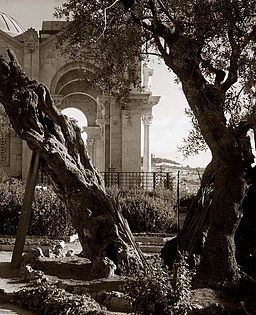 |
| By Laurits Tuxen (1853-1927) [Public domain], via Wikimedia Commons |
Traditional churches follow a cycle of seasons called the liturgical year, or church year. The church year has two major celebrations: Jesus birth (Christmas), and his resurrection (Easter). In between, are a series of seasons which celebrate key aspects of the life of our Savior. In effect, Christians walk with Christ through the full cycle of his earthly life, each year.
 |
| By LooiNL[GFDL http://www.gnu.org/ copyleft/fdl.html) or CC-BY-SA-3.0-2.5-2.0-1.0 (http://creativecommons.org/licenses/by-sa/3.0)] |
The seasons in the liturgical year: Advent, Christmas, Epiphany, Epiphanytide/Ordinary Time, Lent, Holy Week, Easter, Pentecost, and then Time of Pentecost/Ordinary Time, are represented by colors. Each of the various seasons has a different tone and focus, and color changes set the stage and represent this well.
The colors vary somewhat according to the neighborhood of Christianity in which one resides, but, generally, in Western churches, they are:
Advent (Waiting & Preparation for the Coming of Jesus), (sometimes blue) - beginning of Advent to Dec. 24
Christmas(Rejoicing at the Birth of Jesus) -(sometimes gold)- Dec. 25-Jan. 5
Epiphany -(sometimes gold) - Jan. 6
Epiphanytide/ Ordinary Time (Focus on the Early Childhood of Christ and his public ministry) - Jan. 7 - beginning of Lent
Lent (Penetential, Preparatory season in preparation for the resurrection) (or Lenten white in sarum use) - Beginning of Lent - the end of Holy Week
Easter (Celebration of the Resurrection)-(sometimes gold)-Movable Feast, Varies by Year
Pentecost (Celebration of the Coming of the Holy Spirit and the establishment of the Church)-Seventh Sunday after Easter
Time after Pentecost/ Ordinary Time (Focus on Christ's reign as King of Kings, period between time of the apostles and the second coming) - Day after Pentecost until Day before Advent.
Advent and Lent are shades of purple, but purple doesn't show up on my gold background very well!













